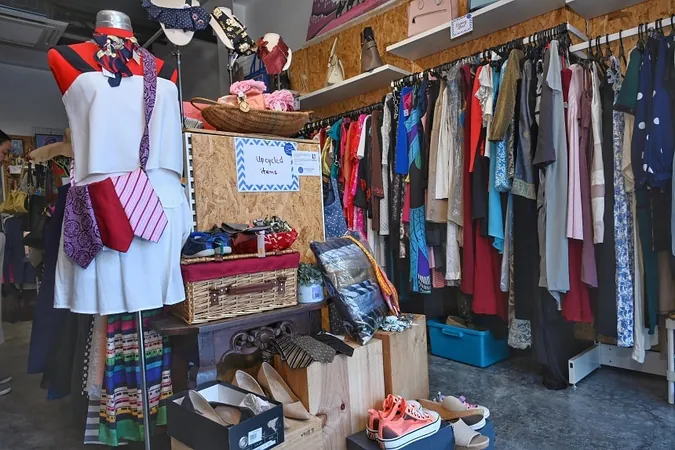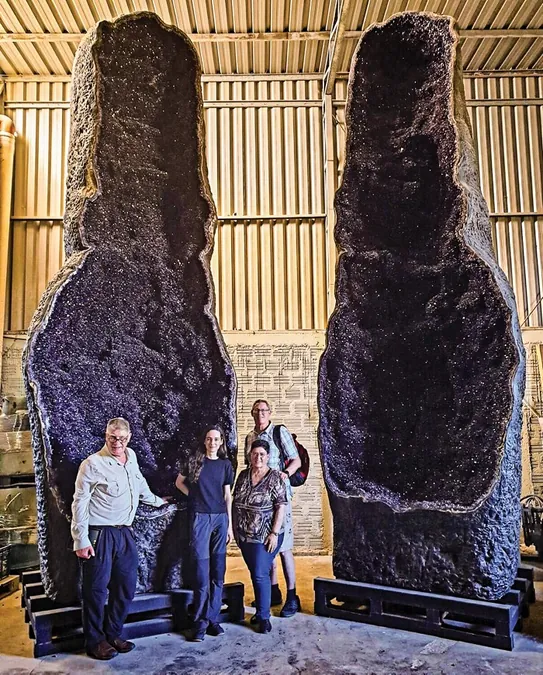
Embracing the TikTok Trend: 'Underconsumption Core' as a Catalyst for Smarter Consumer Habits
2024-10-13
Author: Nur
Introduction
In recent weeks, TikTok has exploded with the "underconsumption core" trend, sparking a conversation about mindful consumption that transcends social media. Initially, the term might raise concerns of economic downturns or recession, but rest assured, it's a positive movement encouraging people to think twice before purchasing.
The Trend in Action
Watch as users showcase innovative ways to maximize their possessions, whether it's squeezing out the last drop of makeup or reviving vintage outfits by shopping at thrift stores. Singaporeans are diving into this trend too, with many sharing their personal challenges to limit online shopping to essential items or even committing to "no-buy" months.
Environmental Relevance in Singapore
The recent focus on consumption and its environmental impact is particularly relevant in Singapore, where waste management remains a pressing issue. This trend highlights a critical aspect of the environmental conversation: it's not solely about low recycling rates but the high volume of consumption itself that contributes to waste.
Core Principles of Underconsumption
The concept of "underconsumption core" encourages us all to reconnect with fundamental consumption values:
1. Mindful Purchasing
Prioritize what you truly need. Refrain from falling into the trap of fast fashion and opt for items that are durable and environmentally friendly. While the initial cost may be higher, think of it as an investment that pays off by reducing the need for frequent replacements.
2. Alternative Consumption
Embrace the pre-loved economy. Consider renting or borrowing items rather than buying new ones, especially for seldom-used goods. This not only saves money but also promotes sustainability.
3. Responsible Resource Use
Make the most of what you have. Repair and repurpose items instead of discarding them. This mentality not only extends the life cycle of products but also reduces waste significantly.
Historical Perspective
These principles aren't novel; they echo practices from previous generations when sustainability was a necessity rather than a trend. Many of us remember growing up with hand-me-down clothes or creatively repurposing materials at home. Despite the pressures of modern consumerism, the values of frugality and resourcefulness remain pertinent today.
Current Consumption Statistics
Numbers speak volumes—over the last five years, Singaporeans have increased their retail spending, which only adds to the strain on the environment. A staggering 10kg of e-waste, 36kg of textile waste, and 128kg of food waste are generated per person annually in 2023. Alarmingly, only 12% of household waste was recycled this year, marking the lowest national recycling rate (52%) in a decade.
Looking Ahead
As we strive toward a target recycling rate of 70% by 2030 outlined in the Zero Waste Masterplan, adopting the "underconsumption core" mindset becomes all the more relevant.
Conclusion
This trend nudges us to amplify our adherence to the "3Rs"—Reduce, Reuse, and Recycle. By focusing on reducing our consumption and reusing items, we can cultivate more responsible habits that benefit our wallets and the planet. Moreover, a more conscious consumer base will compel businesses to pivot towards regenerative economic models, promoting the creation of durable products and enhancing circular economies.
Ultimately, whether referred to as "underconsumption core," "mindful purchasing," or "responsible resource use," this trend encapsulates the timeless wisdom of consuming thoughtfully. This movement is not just a fleeting TikTok fad; it's an opportunity for us to embrace a lifestyle that is sustainable and enriching. Why not join the wave of smart consumers for a healthier planet and a fuller pocket?



 Brasil (PT)
Brasil (PT)
 Canada (EN)
Canada (EN)
 Chile (ES)
Chile (ES)
 España (ES)
España (ES)
 France (FR)
France (FR)
 Hong Kong (EN)
Hong Kong (EN)
 Italia (IT)
Italia (IT)
 日本 (JA)
日本 (JA)
 Magyarország (HU)
Magyarország (HU)
 Norge (NO)
Norge (NO)
 Polska (PL)
Polska (PL)
 Schweiz (DE)
Schweiz (DE)
 Singapore (EN)
Singapore (EN)
 Sverige (SV)
Sverige (SV)
 Suomi (FI)
Suomi (FI)
 Türkiye (TR)
Türkiye (TR)